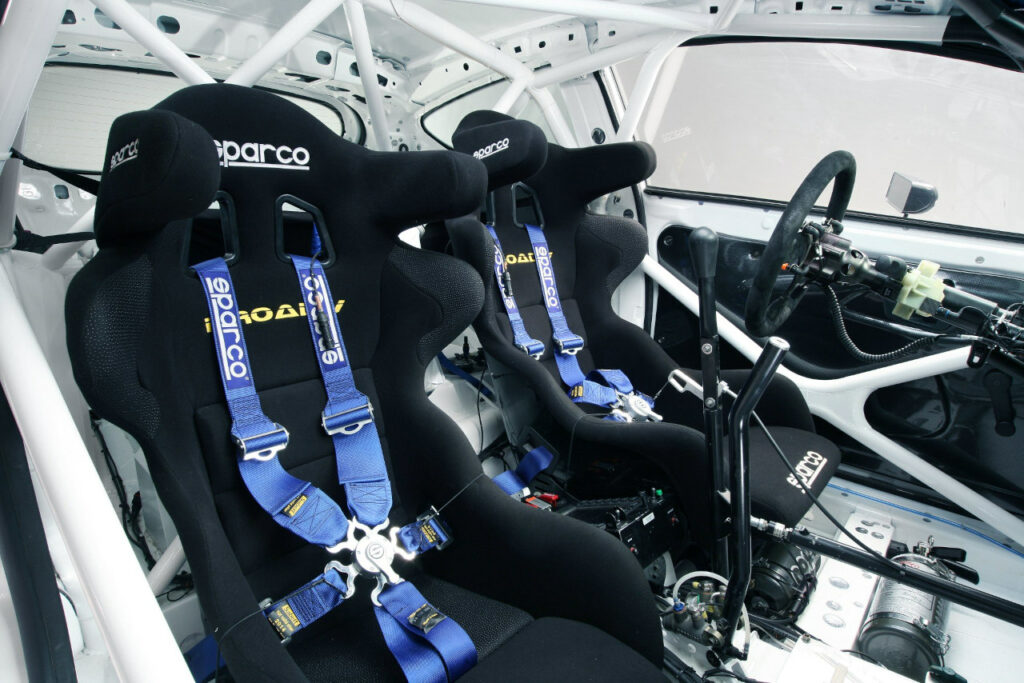
Summary:
1. Why use a bucket seat?
Integral to racing and sports cars, bucket seats are wrap-around seats designed to support the driver or co-driver and ensure comfort and safety. They generally have a deeper cushion than conventional seats and more pronounced side bulges to prevent the body from moving during high-speed turns.
Particularly ergonomic, the bucket seat provides excellent support for the back and pelvis so that the occupant can be one with the vehicle, whatever the conditions.
It also avoids, when the body is subjected to the centrifugal force in turn:
- clinging to the steering wheel.
- clumsy and imprecise gestures.
- being surprised in case of a traction loss.
Depending on its design, frame, materials and coverings used, it offers more or less comfort to the occupant but is almost always lighter than a standard seat. Very rigid, it guarantees a very good protection in case of accident, even more so when associated with a safety harness.
A quick history of bucket seats
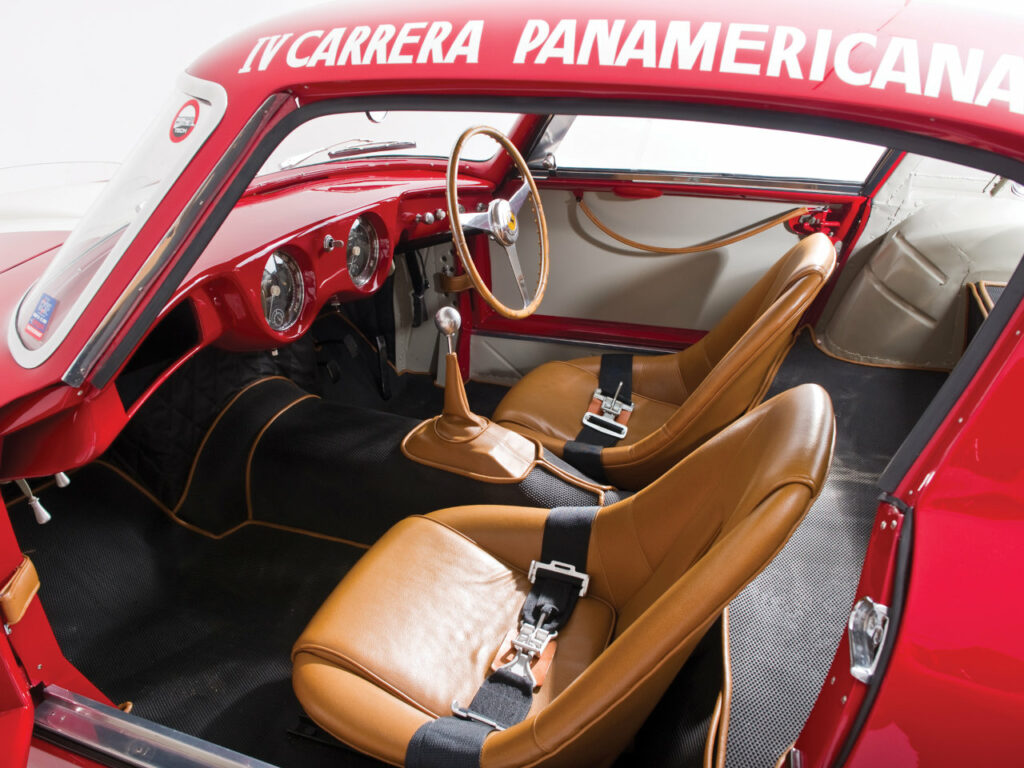
Bucket seats appeared in Europe after World War II to equip certain exclusive sports cars dedicated to competition. From the end of the 1940s onwards, models from brands such as Bugatti, Aston Martin, Jaguar, Porsche or Ferrari were fitted with these more enveloping seats to meet the new demands of drivers.
The introduction of these individual seats in the passenger compartment of more mass-produced cars, installed in place of bench seats, coincided with the arrival of vehicles with floor-mounted controls (gear lever and handbrake). Bucket seats have thus accompanied the rise in vehicle performance.
There are two main types of bucket seats on the market, which we will discuss in the following sections: FIA approved bucket seats for competition and “sport” bucket seats for the road.
2. FIA approved racing seat
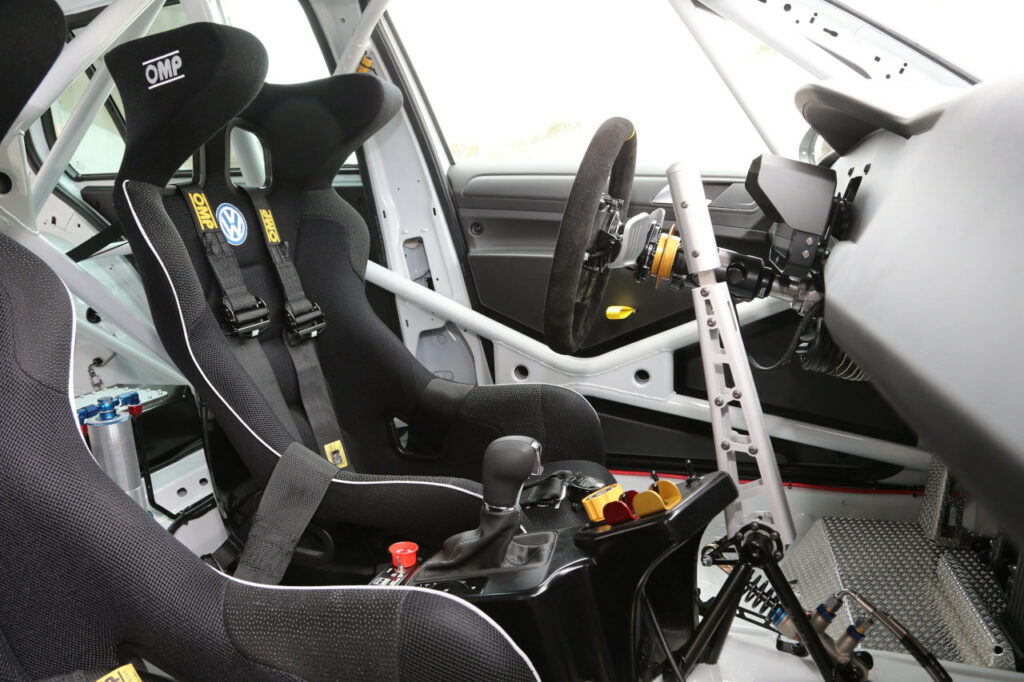
The evolution of racing seats over time
The bucket seats used in racing have evolved greatly over the course of history. From a minimalist shape in their early days, reminiscent of the wooden container from which they take their name, they have benefited from the experiences of drivers and the progress of technology to offer ever greater comfort, performance and safety. The materials used for the shell and upholstery have improved, making them lighter, stiffer and more supportive, as has the design of the seats.
The head support in motorsports has been considerably improved with the introduction of headrests and the creation of higher models, then by the adoption of “ears” securing the sides of the face. Seats were also adapted to Hans-type head and neck protection devices from the 1990s. The shoulders and torso have also been better protected thanks to new reinforcements, as have the hips and thighs with increasingly enveloping seats. The number of belt and harnesses attachment points has also been increased over the years.
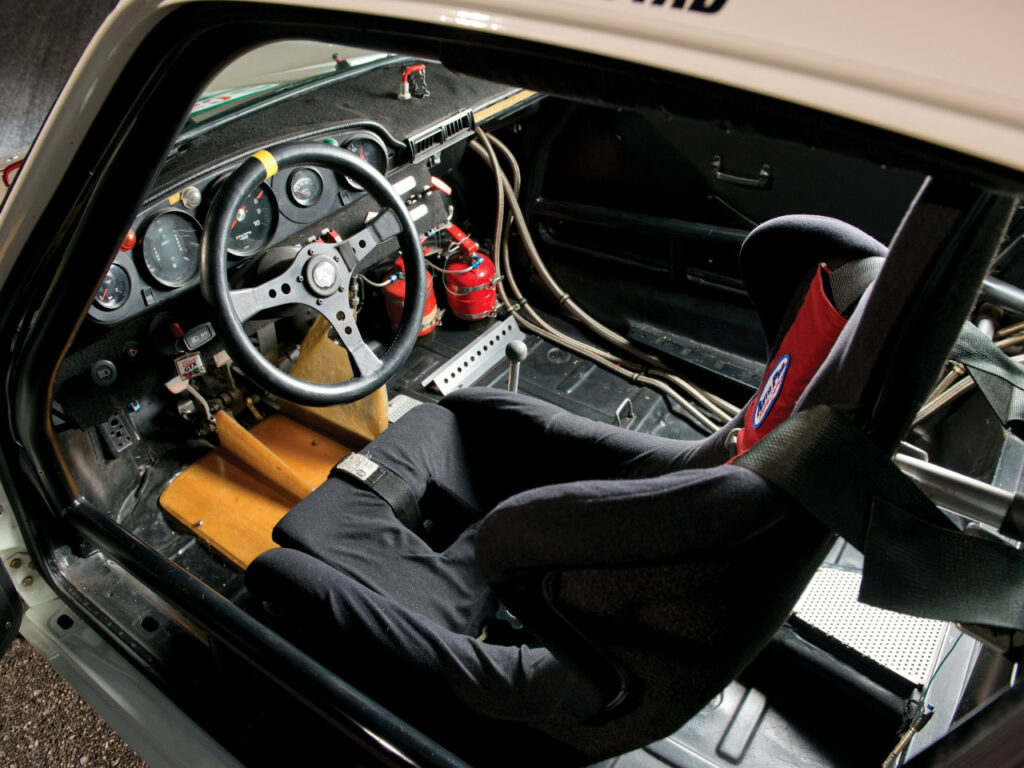
Motor racing and the FIA standards
Today, the practice of motorsport requires most of the time the presence in the vehicle of one or two bucket seats approved by the Fédération Internationale de l’Automobile (FIA). There are two standards: FIA 8855-1999 (5 years validity period from year of production) and FIA 8862-2009 (10 years from year of production). Any FIA approved seat must pass static or dynamic tests relating to its geometry, its resistance, its support or its flammability. Note that the seat mounts and fixings must also comply with regulations.
Each seat has a rectangular white label on its side, at chest height, indicating several information:
- FIA standard name
- manufacturer’s name
- seat serial number
- seat name
- homologation number including year of production
- expiry year
Composition of seats for motorsports
Racing seats can be made of different materials. For the frame of the seat, manufacturers mainly use tubular or composite shells such as fiberglass, carbon or Kevlar.
These shells are covered with velvet, leather or other materials, sometimes with anti-slip areas on the shoulders. These bucket seats also have energy-absorbing padding applied to the inner surfaces of the shell. Repositionable and detachable cushions can also be offered to improve the driving position and comfort of the driver or co-driver.
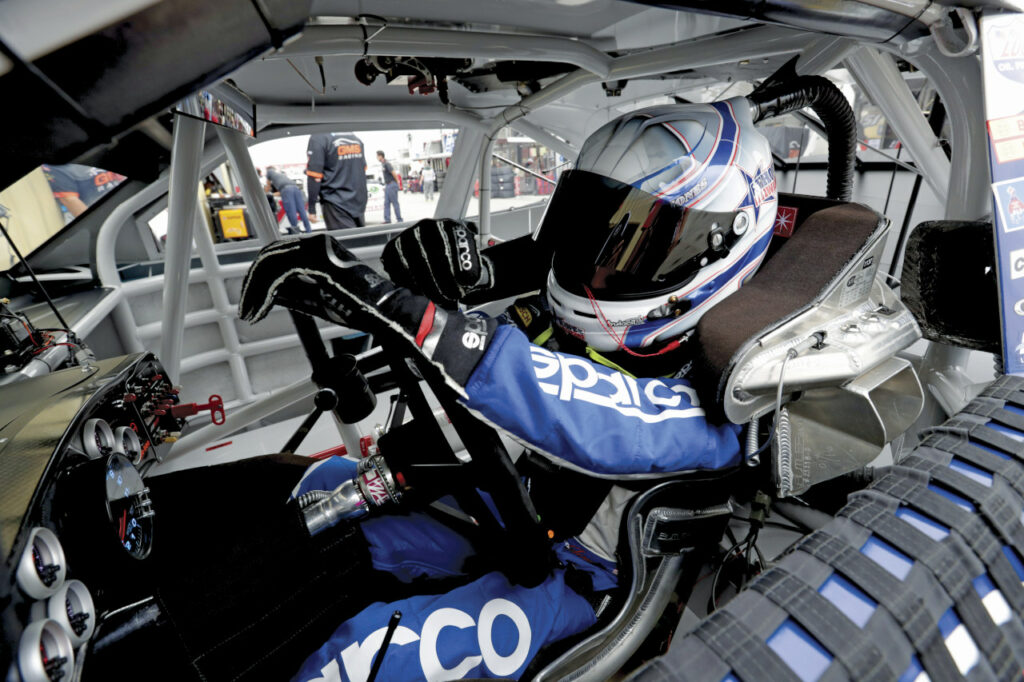
A recognizable appearance and style
Depending on the type of bucket seat, its look may be different in terms of its base, backrest or sides. There are also seats that are deeper or shallower, with or without ears to support the head, etc. Several seat sizes can exist for the same model. As a general rule, an FIA approved seat has 5 openings for the harness straps in the shoulder, abdominal and crotch areas. This construction allows for the installation of harnesses with 6 or more points.
FIA approved bucket seats are used in all kinds of motorsports ranging from rallying to circuit, drifting, hill-climbing, historic racing, etc. Depending on the type of competition (international, national, regional, etc.), the certification required may differ.
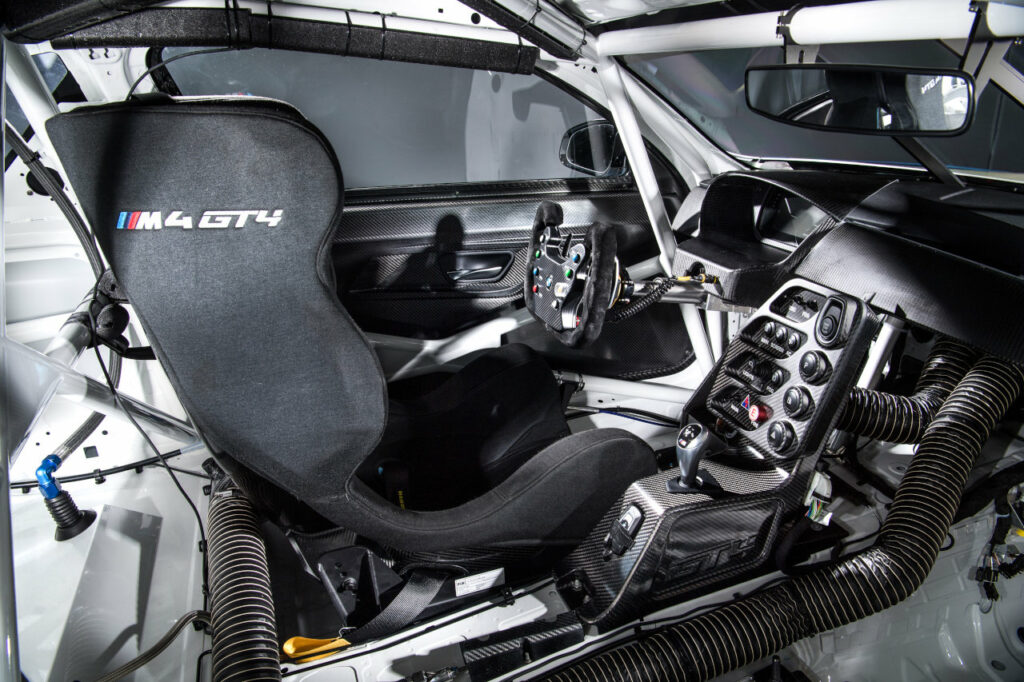
Racing bucket seat prices
There are FIA approved seats at all prices. Entry-level models start at around 200 euros, while the most sophisticated products can reach more than 6000 euros! From the inexpensive FIA approved bucket seat to the most expensive, the driver (or co-driver) is spoiled for choice. For the purchase, he can turn to official distributors, such as the DriftShop site which offers, among other things, Sparco and Recaro brand products.
3. Road type sport seat
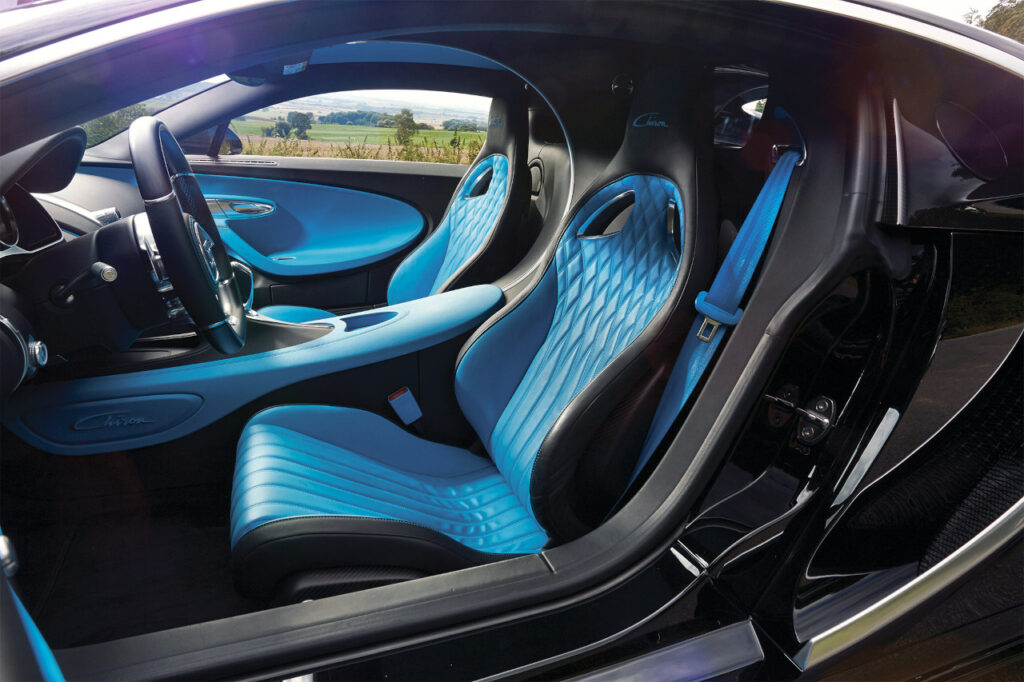
An increasingly “popular” use
For road and club use, it is possible to choose a bucket seat that is not approved for motorsport. Historically, this type of seat has been installed by manufacturers in production cars since the second half of the 21st century, often with the help of equipment manufacturers, but it is mainly the aftermarket firms who have popularized their use.
In 1965, Recaro introduced its sports seat, the world’s first aftermarket seat, quickly followed by its first road-legal bucket type model. In the 1990s, with the boom of the tuning trend, the market saw the supply of road bucket seats grow. Among the most notable developments, we can retain the arrival of shells made of composite materials, the first models equipped with a universal side airbag or the presence of electric controls.
Fixed or reclining seat?
Many approved seats have reclining capabilities and a folding backrest. This type of sport seat allows easy access to the rear seats of 2 or 3-door vehicles. Some seats have two adjustment knobs (right and left) and can therefore be mounted on either the driver’s or passenger’s side, while others are asymmetrical. Nevertheless, fixed back seats remain popular and can be installed in cars with rear doors.
The so-called “vintage” seats most of the time do not have a tilting backrest and are ideal for old and classic vehicles. The most fashionable modern bucket seats feature 2 or 4 harness holes, which makes them particularly suitable for mixed road and occasional circuit use. Remember that it is essential to keep the vehicle’s original seat belts in working order for all road traffic.
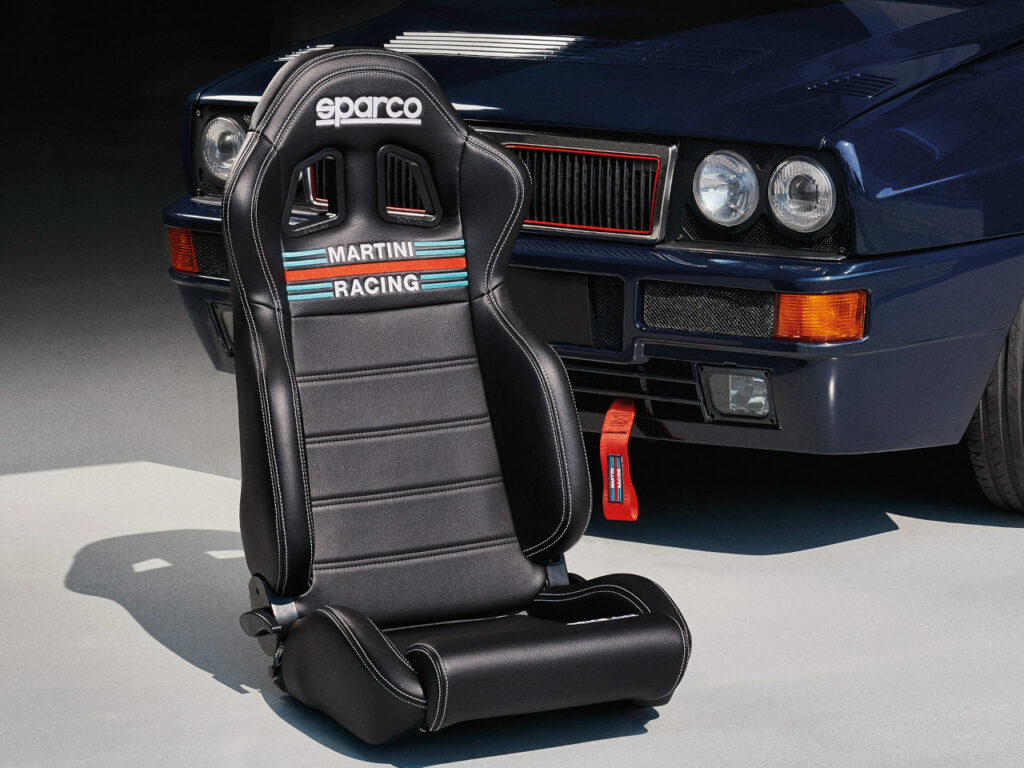
European standards for car seats
Some countries require compliance with specific quality and safety standards. Many road bucket seats, like alloy wheels, suspension springs or exhaust systems for example, have TÜV (Technischer Überwachungsverein) and ABE (Allgemeine Betriebserlaubnis) approvals, the main standards in force in Europe. These seats are then delivered with certificates attesting to their conformity. Note also that there are a few rare seats with both road and FIA approvals.
The road bucket seats are also highly technical!
Like a competition seat, the road bucket seat is made from different materials. As a general rule, we find tubular frames or glassfiber shells upholstered in breathable fabric, suede, leather, synthetic leather, alcantara, etc. They can receive headrests, adjustable lumbar supports, additional cushions and other accessories sometimes offered as options for extra comfort. Some even feature a heating system.
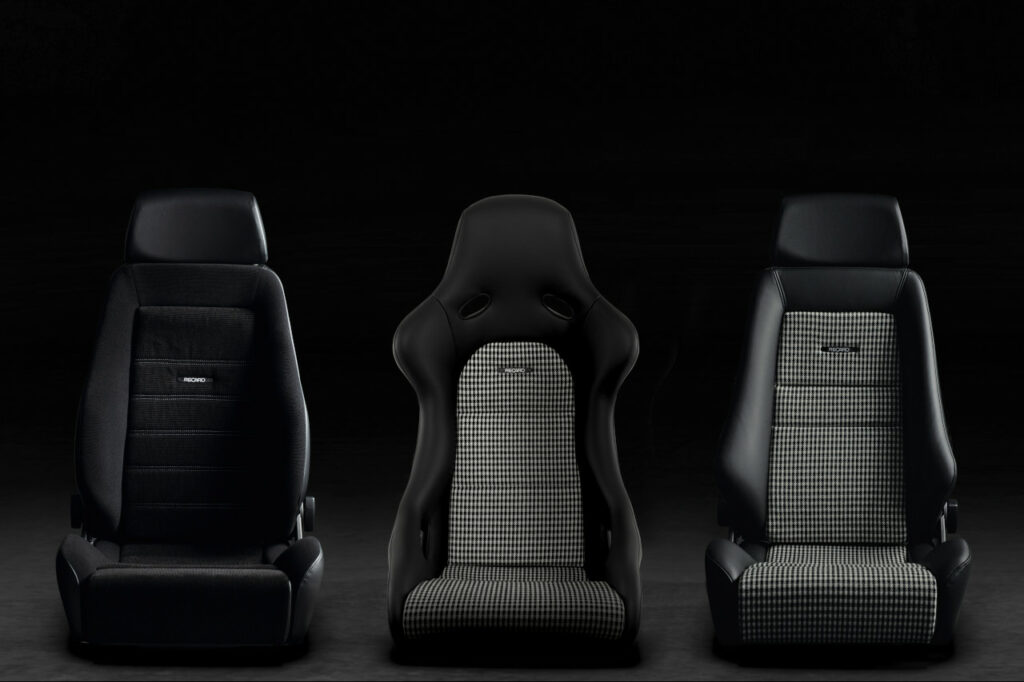
Many manufacturers market road bucket seats for all types of vehicles, from modest to high performance cars. The range of prices is very wide, the most affordable starting at less than 200 euros when the top of the range can cost more than 3000 euros. You can buy an approved road bucket seat at the best price from official distributors like the DriftShop online store.
Photo sources: Ford / Ferrari / Volkswagen / Porsche / Sparco / BMW / Bugatti / Recaro
